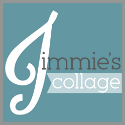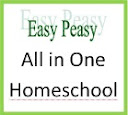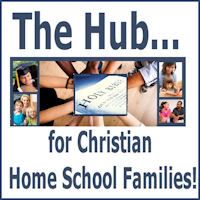This is for those who wish to know more about Konos.
What is Konos
You might be one of those parents who have heard about
Konos or have not, but want to know more.
Konos was designed by two homeschool mothers who wanted to step away from the normal school system. They wanted to teach their children through Godly character traits. They also wanted to be able to teach their children without having to make use of textbooks, but use the world and experiences as their reference.
Konos is a very hands on method of learning. There are 3 Konos Volumes for Grade R - 8. These Volumes cover the following.
Konos was designed by two homeschool mothers who wanted to step away from the normal school system. They wanted to teach their children through Godly character traits. They also wanted to be able to teach their children without having to make use of textbooks, but use the world and experiences as their reference.
Konos is a very hands on method of learning. There are 3 Konos Volumes for Grade R - 8. These Volumes cover the following.
VOLUME I
Attentiveness
Ears/Eyes/Other Senses
Sound/Music/Frontiersman/ Indians
Tracking & Trapping
Birds
Ears/Eyes/Other Senses
Sound/Music/Frontiersman/ Indians
Tracking & Trapping
Birds
Obedience
Authority/Light/Bible
Kings and Queens
Military
Friction/Resistance
Horses
Crime and Punishment
Authority/Light/Bible
Kings and Queens
Military
Friction/Resistance
Horses
Crime and Punishment
Orderliness
Sequencing/Counting/Measuring
Planets/Moons
Calendars/Seasons
Animal Classification
Plant Classification
Rock Classification
Sequencing/Counting/Measuring
Planets/Moons
Calendars/Seasons
Animal Classification
Plant Classification
Rock Classification
Trust
Deception/Illusion
Sheep/Weaving
Floating/Ships
Flight/Airplanes
Deception/Illusion
Sheep/Weaving
Floating/Ships
Flight/Airplanes
Patience
Plant growth/Gardening
Grain/Bread/Yeast
Human Birth/Growth
Animal Birth/Growth
Plant growth/Gardening
Grain/Bread/Yeast
Human Birth/Growth
Animal Birth/Growth
Stewardship
Ecology/Conservation
Managing Time and Money
Possessions/Career
Abuse/Prevention
Nutrition/Exercise/Rest/Fun
Ecology/Conservation
Managing Time and Money
Possessions/Career
Abuse/Prevention
Nutrition/Exercise/Rest/Fun
Honor
Attributes of God/Hymns
Pottery and Sculpture
Tabernacle
Cathedral/Church Architecture
Countries/Cultures
Kindness/Service/Etiquette
Attributes of God/Hymns
Pottery and Sculpture
Tabernacle
Cathedral/Church Architecture
Countries/Cultures
Kindness/Service/Etiquette
VOLUME II
Inquisitiveness
Research/Reference
Scientist/Scientific Method
Explorers/Navigation/Sailing
Earth
Weather
Africa
Detectives
Research/Reference
Scientist/Scientific Method
Explorers/Navigation/Sailing
Earth
Weather
Africa
Detectives
Responsibility
Pet Care
Beavers
Ants
American Settlers
Colonial America
Pet Care
Beavers
Ants
American Settlers
Colonial America
Love/Generosity
Christmas
Easter
Valentines Day
Christmas
Easter
Valentines Day
Courage
New Testament Men
Modern and Fictional Men
American Revolution
New Testament Men
Modern and Fictional Men
American Revolution
Wisdom
Proverbs/Old Testament
Choices/Safety
Government
U.S. Constitution
Presidents
Electoral Process
Proverbs/Old Testament
Choices/Safety
Government
U.S. Constitution
Presidents
Electoral Process
Loyalty
Family/Friends/Marriage
Immigration/Citizenship
Family/Friends/Marriage
Immigration/Citizenship
VOLUME III
Cooperation
Systems of the Body
Bees
States and Regions
Town/Community
Family/Church
Systems of the Body
Bees
States and Regions
Town/Community
Family/Church
Determination
Olympics and physical skills
Handicaps
Great feats/Expeditions
Atomic research
Olympics and physical skills
Handicaps
Great feats/Expeditions
Atomic research
Honesty
Books
Newspapers/Media
Business/Advertising
Books
Newspapers/Media
Business/Advertising
Self Control
Body/Appetites/Emotions
Poetry
Singing/Dance/Speech
Body/Appetites/Emotions
Poetry
Singing/Dance/Speech
Resourcefulness
Frontier Life
Inventions/Simple Machines
Energy/Electricity
Industrial Revolution
Frontier Life
Inventions/Simple Machines
Energy/Electricity
Industrial Revolution
Joy/Cheerfulness
Environment
Humor/Laughter
Gratitude/Contentment
Suffering
Environment
Humor/Laughter
Gratitude/Contentment
Suffering
As you can see within each character trail unit you
will learn various things. As with Attentiveness you will learn about sound,
ears, eyes, birds and much more.
You will start out each day with Bible study, then you will do your Languages and Maths (separate programs of your choice should be bought for this). Later you will move on to discussing your topic for the day. Do some activities, read from books and just enjoy the day. Once a week you will spend time only doing your Konos unit with some more activities and watching a movie that relates to that character trait or topic.
If you are like me then planning in advance is a good idea. List the books your would like to use or get an indication on topics. Plan your trip to the library and select everything you need. If you gave a good stocked library you should not have any issues with this. If you have one like mine then you really have to dig or see if they can source the books from other libraries.
A nice to have would be if you can build up your own library with good reference books. This is however not necessary as not everyone can afford this.
If you are in South Africa we buy all our Konos books and more from Oikos Ministries.
There is an entire series on Oikos's website about Konos and how to use it. It is the Konos Junior Workshop.
You will start out each day with Bible study, then you will do your Languages and Maths (separate programs of your choice should be bought for this). Later you will move on to discussing your topic for the day. Do some activities, read from books and just enjoy the day. Once a week you will spend time only doing your Konos unit with some more activities and watching a movie that relates to that character trait or topic.
If you are like me then planning in advance is a good idea. List the books your would like to use or get an indication on topics. Plan your trip to the library and select everything you need. If you gave a good stocked library you should not have any issues with this. If you have one like mine then you really have to dig or see if they can source the books from other libraries.
A nice to have would be if you can build up your own library with good reference books. This is however not necessary as not everyone can afford this.
If you are in South Africa we buy all our Konos books and more from Oikos Ministries.
There is an entire series on Oikos's website about Konos and how to use it. It is the Konos Junior Workshop.
You can view the Konos official site for
full information.
If you are just starting out, you can also make use of
the Homeschool mentor program. With this you pay a
$30 fee per month and all the lessons and activities are explained to you and
you follow the program.
Even if you do not plan to make use of the mentor
program, I suggest you check out the site for the free sample video lessons just
to give you an idea of how you can go about.
This is an different way homeschooling and this
method can not be compared to anything out there. It is not a curriculum, it is
a way of living :)
Here is some old posts of when we used Konos:
Just to clarify. We did
use Konos at one stage and are not using it anymore. I still have my
file and will not part with it, I am just not sure if and when we will
go back to it. We might just draw some ideas here and there for certain
themes
Blessings
Maryna









































